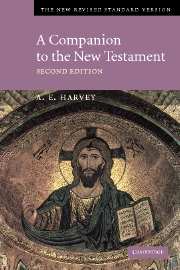Summary
Jesus and John
The beginning of the good news. When a messenger brought news of a victory in war or of some stroke of personal good fortune, the correct Greek word for the tidings was euangelion, ‘good news’. In the Roman empire, happy events of this kind were ascribed to the apparently superhuman power of the reigning emperor. It was the emperor's genius which assured victory, peace and prosperity. He was the saviour of humankind, and the news of a new emperor's birth or accession was always a significant euangelion. The essence of the Christian message was that a new saviour had now appeared on earth and had ascended his throne in heaven. It was no stretch of language to call this message a euangelion, and the word soon became a technical term in the Christian vocabulary. The equivalent in English has always been the Anglo-Saxon word gospel (as in the NRSV footnote), of which good news is a reasonable modern equivalent.
The content of this ‘good news’ concerned (or was proclaimed by) Jesus Christ, the Son of God. For some years before Mark wrote (as is evident from Paul's letters), the title ‘Son of God’ had become attached to Jesus. Nevertheless, in the written gospels it is used only sparingly, and its occurrence here in the very first verses of Mark's gospel is significant: evidently one of the main purposes of Mark's work was to demonstrate that Jesus was in fact the ‘Son of God’.
- Type
- Chapter
- Information
- A Companion to the New Testament , pp. 104 - 212Publisher: Cambridge University PressPrint publication year: 2004



